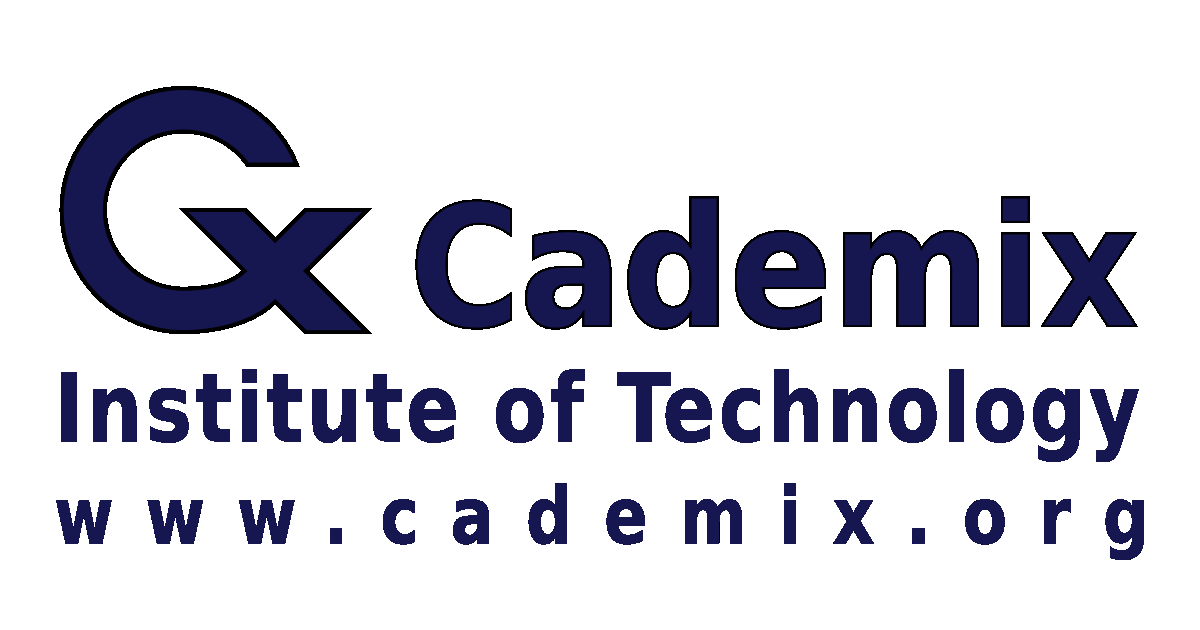In a digitally interconnected era where information travels across the globe in seconds, the question of how to moderate online content remains one of the most contentious and urgent topics in public discourse. Nations, corporations, and advocacy groups wrestle with fundamental questions about free speech, user safety, and the extent to which private platforms should be held accountable for the content they host. Political and social movements often play out in real time on social media, while misinformation, hate speech, and extremist ideologies find fresh avenues in these same digital spaces. The growing complexity of online communication has thus given rise to a complex tapestry of regulatory proposals, technological solutions, and user-driven initiatives. Amid these challenges, content moderation has emerged as the gatekeeper of online expression, operating at the intersection of law, ethics, and evolving community standards.
Keyphrases: Content Moderation, Future of Content Moderation, Platform Responsibility, AI in Content Regulation
Table of Contents
Abstract
Content moderation is perhaps the most visible and divisive issue confronting online platforms today. On one side stands the principle of free expression, a foundational pillar of democratic societies that allows a broad spectrum of ideas to flourish. On the other side looms the necessity of curbing malicious or harmful speech that undermines public safety, fosters hatred, or spreads falsehoods. As social media networks have grown into worldwide forums for debate and networking, demands for accountability have intensified. Governments propose laws that compel swift removal of illegal content, while civil liberties groups warn against creeping censorship and the risks of overly broad enforcement. Technology companies themselves are caught between these opposing pressures, seeking to maintain open platforms for user-generated content even as they introduce rules and algorithms designed to limit harm. This article explores the dynamics that shape contemporary content moderation, examining the legal frameworks, AI-driven systems, and community-based approaches that define the future of online governance.
Introduction
The rise of user-generated content has revolutionized how people share information, forge social connections, and engage in civic discourse. Platforms such as Facebook, Twitter, YouTube, TikTok, and Reddit have reshaped human communication, enabling billions of individuals to create, comment upon, and disseminate material with unprecedented speed and scope. While these digital spheres have broadened public engagement, they have simultaneously introduced complications related to the sheer scale of activity. Content that would once have taken weeks to publish and distribute can now go viral in a matter of hours, reverberating across continents before moderators can intervene.
This amplified capability to publish, replicate, and comment makes the modern-day internet both an invaluable instrument for free expression and a breeding ground for abuse. Users encounter disinformation, hate speech, and harassing behavior on a regular basis, often feeling that platforms do not intervene quickly or transparently enough. Critics highlight cases in which online rumors have incited violence or defamation has ruined reputations, contending that platform inaction amounts to a social and ethical crisis. Meanwhile, defenders of unencumbered speech caution that heavy-handed moderation can quash legitimate debate and disrupt the free exchange of ideas.

Governments worldwide have begun to respond to these pressures by implementing or proposing legislative measures that define platform obligations. In the European Union, the Digital Services Act (see EU Digital Strategy) mandates greater responsibility for content hosting services, requiring large technology companies to remove illicit material swiftly or face substantial fines. In the United States, debates swirl around Section 230 of the Communications Decency Act (see the Electronic Frontier Foundation’s overview), which confers legal protections on online platforms for content posted by their users. At the same time, regional frameworks such as Germany’s Netzwerkdurchsetzungsgesetz (NetzDG) set tight deadlines for removing specific unlawful content, illustrating how national governments aim to regulate global digital spaces.
Private platforms are also taking their own measures, driven by both self-interest and social pressure. They adopt community guidelines that outline what constitutes prohibited content, hire thousands of human moderators, and deploy artificial intelligence systems to detect infringements. Yet the fact remains that technology is not neutral: the rules embedded into algorithms and the decisions made by corporate policy teams reflect cultural norms and power dynamics. As a consequence, debates over content moderation often escalate into disagreements about censorship, fairness, and transparency. In a setting where billions of pieces of content are posted daily, no single approach can fully satisfy the diverse range of user expectations. Nonetheless, the quest for improved moderation mechanisms continues, as online communications shape politics, commerce, and culture on an unprecedented global scale.
The Challenges of Content Moderation
The role of content moderators goes far beyond the simple act of deleting offensive or inappropriate posts. They must navigate a landscape in which legal boundaries, ethical considerations, and user sensibilities intersect. Because of the complexity inherent in these overlapping factors, platforms face formidable operational and philosophical difficulties.
The sheer quantity of user-generated content represents the first major problem. Each minute, social media users upload hours of video, post countless messages, and share innumerable links. Even platforms that employ armies of reviewers cannot meticulously assess all content, especially because new posts appear continuously around the clock. Machine learning tools offer assistance by automatically filtering or flagging content, but they still have shortcomings when it comes to nuance. A sarcastic statement that critiques hate speech might be flagged as hate speech itself. Conversely, coded language or carefully disguised extremist propaganda can elude automated detection.
Cultural relativism deepens the dilemma. Social mores vary widely by region, language, and local tradition. Expressions deemed deeply offensive in one place might be relatively benign in another. Platforms that operate on a global scale must decide whether to standardize their policies or adapt to each jurisdiction’s norms. This becomes especially delicate when laws in certain countries might compel censorship or permit content that is considered objectionable elsewhere. Balancing universal guidelines with local autonomy can lead to charges of cultural imperialism or, conversely, complicity in oppressive practices.
Legal compliance is equally intricate. Operators must satisfy the regulations of every market they serve. If a platform fails to remove extremist propaganda within hours, it might be fined or banned in certain jurisdictions. At the same time, laws that impose overly broad censorship can clash with free speech norms, placing platforms in an uncomfortable position of potential over-compliance to avoid penalties. The complexity of satisfying divergent legal frameworks intensifies for decentralized platforms that distribute moderation responsibilities across a network of nodes, challenging the very notion of a single corporate entity that can be held accountable.
The proliferation of misinformation and malicious campaigns adds yet another dimension. Coordinated groups sometimes exploit social media algorithms to manipulate public opinion, launch harassment campaigns, or stoke political upheaval. In some cases, state-sponsored actors orchestrate such efforts. Platforms must guard against these manipulations to protect the integrity of public debate, but overreactions risk ensnaring legitimate discourse in the net of suspicion. This tangle of priorities—user rights, national law, community values, corporate interests—explains why moderation controversies frequently devolve into heated, polarized debates.
The Role of AI in Content Moderation
Automation has become indispensable to modern content moderation. Platforms rely on algorithms that scan massive volumes of text, images, and video to identify potentially harmful material. Machine learning models can detect recognizable signals of pornography, violence, or hate speech and can function at a scale impossible for human staff to replicate. The introduction of these technologies has partially streamlined moderation, enabling platforms to react faster to obvious violations of community guidelines.
However, artificial intelligence alone is not a panacea. Context remains crucial in determining whether a piece of content is merely provocative or definitively crosses a line. Systems that lack deeper language understanding might flag or remove crucial information, such as medical instructions, because they misconstrue it as violating health-related rules. Attempts to teach AI to discern context and tone require enormous, curated datasets, which themselves might contain embedded biases. Moreover, determined users often find ways to circumvent filters by altering keywords or embedding misinformation in ironic memes and coded language.
False positives and negatives illustrate how AI can inadvertently distort the moderation process. Overly aggressive algorithms may remove legitimate expression, stoking anger about censorship. Meanwhile, errors in detection let other harmful material slip through. Even when AI performs well statistically, the sheer scale of social media means that a small percentage of errors can affect thousands of users, undermining their trust in the platform’s fairness. The question of algorithmic transparency also arises. Many companies do not fully disclose how their AI decides what to remove or keep, leading to concerns about accountability and potential discrimination against certain viewpoints.
Increasingly, large platforms adopt a hybrid approach. AI systems conduct preliminary scans, automatically removing unambiguously illegal or harmful content while forwarding borderline cases to human moderators for additional scrutiny. In this way, technology offloads the bulk of tasks, allowing human experts to handle the gray areas. However, the mental toll on human moderators should not be overlooked. Repeated exposure to traumatic or disturbing content can affect their well-being, raising moral and psychological questions about how this labor is structured and supported. Some major tech companies have faced lawsuits and public criticism from moderation staff alleging insufficient mental health resources.
Research into more nuanced AI moderation tools continues. Advances in natural language processing, sentiment analysis, and contextual understanding may eventually reduce some of the ambiguities. Exploratory projects also investigate how AI might better identify synthetic media or deepfakes, perhaps by comparing metadata or searching for inconsistencies in pixel patterns. The ultimate goal is a more informed, consistent approach that can scale without sacrificing fairness. Yet it is unlikely that AI alone will replace the need for human judgment anytime soon. The interplay between computational efficiency and empathy-driven interpretation remains central to the moderation enterprise.
Regulatory Trends and Legal Implications
As online platforms evolve into de facto public forums, governments grapple with how to regulate them without stifling innovation or free expression. The debates vary by region. The European Union’s Digital Services Act imposes wide-ranging responsibilities on what it terms “very large online platforms,” compelling them to perform risk assessments and institute robust user grievance mechanisms. This legislative push emerges from the EU’s broader approach to digital governance, seen previously in its General Data Protection Regulation (GDPR), which established strict rules around user privacy and data usage.
In the United States, Section 230 of the Communications Decency Act historically shielded platforms from liability for most user-generated content. Defenders argue that this legal immunity was critical in fostering the growth of the internet economy, but critics claim it lets companies avoid responsibility for the harms they enable. Recent proposals seek to amend or repeal Section 230 altogether, contending that it no longer suits today’s massive social media ecosystems. Civil liberties groups such as the Electronic Frontier Foundation caution that altering Section 230 could inadvertently push platforms to censor more content to avert legal risk, with chilling effects on legitimate speech. Others see it as essential reform that would force platforms to adopt more consistent, transparent moderation policies.
The regulatory conversation extends beyond free speech. Laws in multiple jurisdictions mandate the removal of hate speech, terrorist propaganda, or child exploitation material within short time frames, sometimes under threat of heavy fines. Germany’s NetzDG, for example, compels social media companies to remove obviously illegal content within 24 hours of reporting. Similar laws in countries like France, Australia, and Singapore highlight a global trend toward “notice-and-takedown” frameworks. While these policies aim to curb the rapid spread of extreme or harmful content, critics worry about unintentional censorship if removal standards are imprecise.
Legal developments also address misinformation. During the COVID-19 pandemic, some governments enacted laws to penalize the dissemination of false health information, while calls to combat election-related disinformation grew louder worldwide. The potential tension between ensuring accurate information and preserving the space for dissent underscores the difficulty of legislating truth. Some states are also exploring the notion of “platform neutrality,” demanding that tech companies remain viewpoint neutral. Constitutional scholars argue about whether this approach might violate corporate speech rights or prove unworkable, as neutrality is nearly impossible to define and enforce consistently.
International bodies like the United Nations weigh in on digital rights, contending that the same protections for free expression that exist offline must apply online. However, they also recognize that hateful or violent content in the digital realm can pose unique challenges. The push-and-pull of these diverse legal approaches underscores a reality: content moderation does not happen in a vacuum. Platforms must continuously adjust to an evolving array of mandates, lawsuits, and user sentiments, a process that demands large compliance teams and intricate rulemaking. The outcome is a patchwork of regulations in which identical content might be allowed in one region but banned in another. Harmonizing these divergent standards is an ongoing challenge that shapes the future of the digital commons.
The Future of Content Moderation
The terrain of online discourse evolves in tandem with technological innovation and shifting social values. As platforms further integrate with daily life, content moderation will likely assume new forms and face fresh controversies. Trends such as increasing transparency, decentralization, and heightened user participation are already pointing to emerging paradigms in content governance.
One pressing area is transparency. Users have grown dissatisfied with opaque moderation policies that appear arbitrary or politically motivated. Activists and scholars advocate for “procedural justice” online, demanding that platforms disclose how guidelines are set, who enforces them, and how appeals can be made. Some technology companies have started releasing “transparency reports,” revealing the volume of removals, user complaints, and government requests. Others have convened external oversight boards that review controversial cases and publish reasoned opinions. This movement suggests a future in which content moderation is no longer hidden behind corporate secrecy but subject to public scrutiny and debate.
Another development lies in user-driven or community-led moderation. Certain online forums rely extensively on volunteer moderators or crowd-based rating systems, giving power to the users themselves to manage their spaces. This grassroots approach can strengthen communal norms, but it can also lead to insular echo chambers that exclude differing viewpoints. The concept of “federated” or “decentralized” social media, exemplified by platforms like Mastodon or diaspora*, goes one step further by distributing ownership and moderation across multiple servers rather than centralizing it under a single corporate entity. Such a model can reduce the risk of unilateral bans but may complicate enforcement of universally accepted standards.
Advances in AI will also reshape the future. Enhanced natural language understanding might allow algorithms to interpret humor, irony, and context more accurately. Image and video analysis may improve enough to detect harmful content in real time without frequent false flags. Nevertheless, such improvements raise questions about privacy, especially if platforms analyze private messages or incorporate biometric data for content verification. Calls for “explainable AI” reflect a growing conviction that automated systems must be subject to external audits and comprehensible guidelines.
The emergence of more specialized or niche platforms may further fragment the content moderation landscape. Instead of a small handful of social giants controlling online discourse, new spaces might cater to particular interests or ideological leanings. Each community would adopt its own moderation norms, potentially leading to more polarization. Conversely, a broader range of moderated options might also reduce the tensions currently focused on major platforms by dispersing users across numerous digital communities.
Lastly, the looming question of who should bear ultimate responsibility for moderation will remain salient. As regulatory frameworks evolve, governments may impose stricter mandates for unlawful content removal, forcing companies to allocate even more resources to policing speech. Alternatively, some societies might shift focus to user empowerment, encouraging individuals to filter their own online experiences via customizable tools. These changes are not merely cosmetic. They hold the potential to redefine how people perceive free expression, how they engage with one another, and how they trust or distrust the platforms facilitating interaction.
Conclusion
Content moderation, as many organization include it in their disclaimer, stands at the crossroads of technological possibility, legal constraint, and human values. It has become a defining challenge of our age, reflecting deeper tensions about what kind of discourse societies wish to foster and what boundaries they believe are necessary. The platforms that have transformed global communication do not exist in a vacuum but must operate amid local laws, international conventions, and the moral demands of billions of users with diverse beliefs. While robust moderation can protect communities from harmful behaviors, it also risks stifling creativity and inhibiting the free exchange of ideas if applied too broadly.
Striking the right balance is no easy task. A purely laissez-faire approach leaves users vulnerable to harassment, hate speech, and manipulative propaganda. Yet a regime of excessive control can mutate into censorship, edging out legitimate voices in the pursuit of a sanitized environment. The recent proliferation of AI-driven filtering systems illustrates the potential for more efficient oversight, but it also underscores the role of nuance, context, and empathy that purely algorithmic solutions cannot adequately replicate. Even the best AI depends on human oversight and ethically rooted policies to ensure it aligns with widely held standards of fairness.
Going forward, the discourse around content moderation will likely intensify. Regulatory frameworks such as the Digital Services Act in the EU and the ongoing debates over Section 230 in the US signal a heightened willingness among lawmakers to intervene. Civil society groups champion user rights and transparency, pushing platforms to release detailed moderation guidelines and set up impartial review processes. Grassroots and decentralized models offer glimpses of how communities might govern themselves without a central authority, raising both hopes for greater user autonomy and fears about fracturing the public sphere into isolated enclaves.
Ultimately, content moderation is about shaping the environment in which culture and debate unfold. While technical solutions and legal reforms can alleviate certain extremes, no policy or technology can altogether bypass the fundamental need for ethical judgment and goodwill. The future will belong to platforms that harness both the strength of human empathy and the power of computational scale, implementing community-focused and adaptive moderation frameworks. By doing so, they may uphold the cherished value of free speech while protecting users from genuine harm—a balance that continues to define and challenge the digital age.












